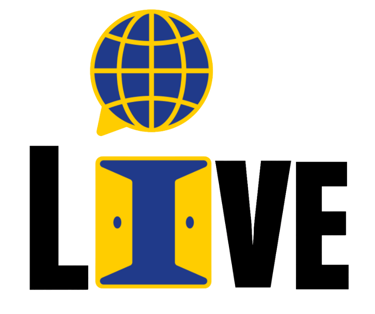LIVE's Resources
Promoting multilingualism also through innovative AI-powered language learning.
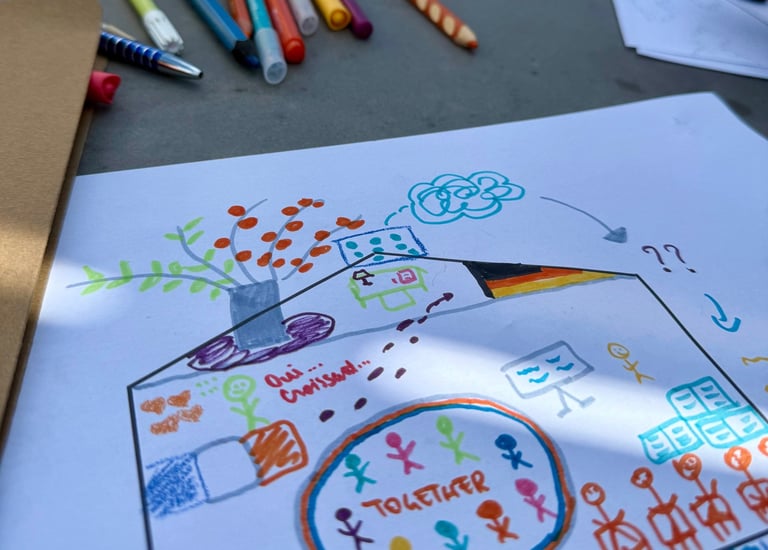

Discover Linguistic Living Spaces (LLS)
Linguistic Living Spaces (LLS) is a creative and reflective method designed to help individuals explore their personal language use. Through simple visual mapping, participants gain insight into how their languages function across everyday life—whether at home, at work, or in the community.
Developed by Carola Koblitz in collaboration with multilingual professionals and rooted in minority language research, LLS brings language stories to life and celebrates the richness of multilingualism. Each mapping is personal, powerful, and offers a new lens into identity and interaction.
This method was also part of our LIVE training sessions. Click here to view the presentation used during the training and click the arrow above to learn more about LLS.
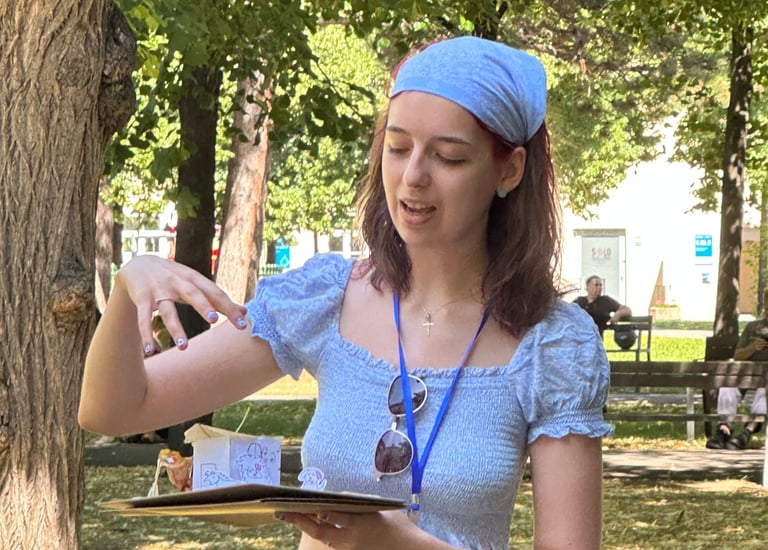

Linguistic Living Spaces in 3D: A Tactile Journey into Language
As part of the LIVE training experience, participants explored a dynamic variation of the Linguistic Living Spaces method—this time, in 3D. Instead of drawing in the familiar house silhouette, individuals used textured papers, tape, cardboard, glue, and natural materials from their surroundings to build a physical map of their languages.
This hands-on approach invited deeper sensory reflection, allowing participants to construct their linguistic identities through space, shape, and dimension. Conducted in the gardens of the University of Vienna Campus, the activity provided both inspiration and grounding, linking personal language stories to the environment around us.
For more information about the method, click the arrow above or reach out to us directly.
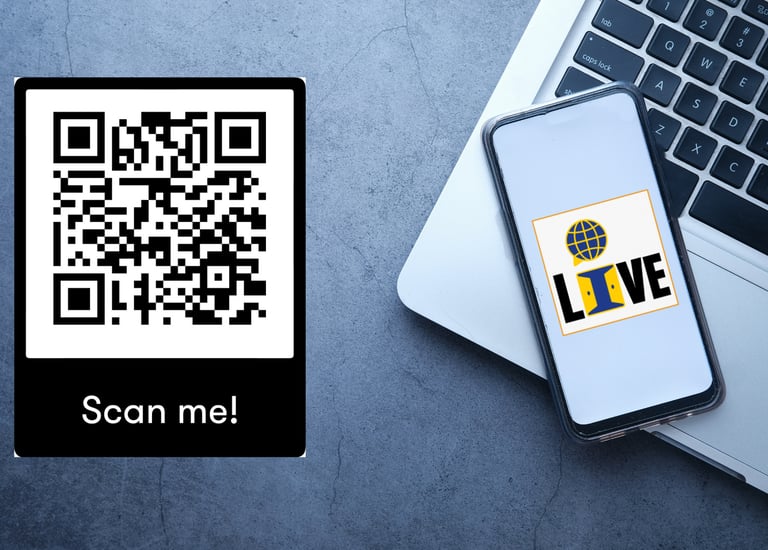

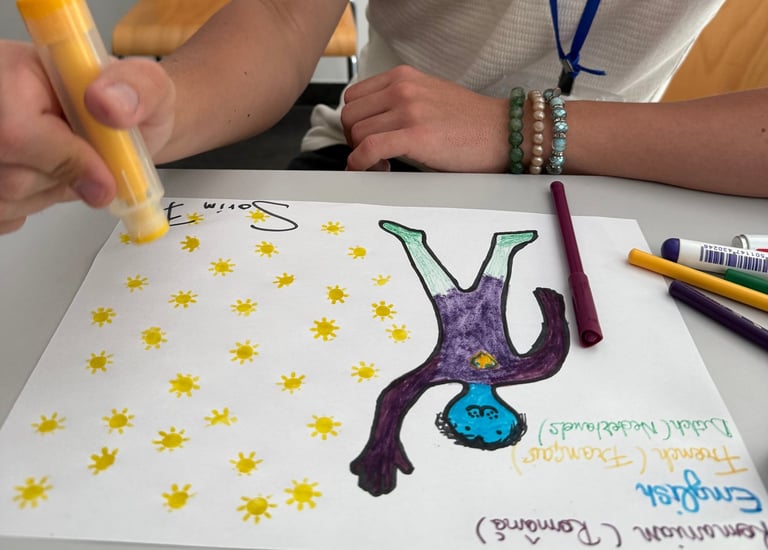

Discover the LIVE App – Your Companion for Language Learning Without Pressure
Designed as part of the LIVE Project, our brand-new conversation agent offers a stress-free, intuitive platform for practicing and exploring languages. This app is more than just a tool—it's a multilingual space for building confidence, discovering new linguistic paths, and connecting personal language stories to real-life dialogue.
Unveiled during our training in Vienna, the app embodies the iLanguage philosophy: every language you speak is a part of who you are. It's a celebration of diversity, growth, and authentic self-expression.
The app is already registered in the Apple Store and Google Play! And for the curious and adventurous, the beta version is available now—just click the arrow below to learn more and start your journey.
Together, let’s make language learning personal, empowering, and deeply human.
Language Portrait by Brigitta Busch
The Language Portrait is a powerful visual method developed by Brigitta Busch that gives shape to our multilingual selves. Using a body silhouette, individuals "paint" their linguistic identities by assigning colors, emotions, and associations to the languages they speak, feel, and carry.
This approach turns abstract language experiences into vibrant, personal artwork—making visible the deep connections between language, identity, and emotion. It’s not about perfect grammar or fluency—it’s about what language means to you.
The method was also introduced during the LIVE training, inspiring participants to reflect creatively on their linguistic journeys.
Click here to view the presentation used during the training. Click the arrow above to learn more about the method and download Busch's body silhouette template.
Let your languages speak through color, texture, and feeling—they’re part of your story.
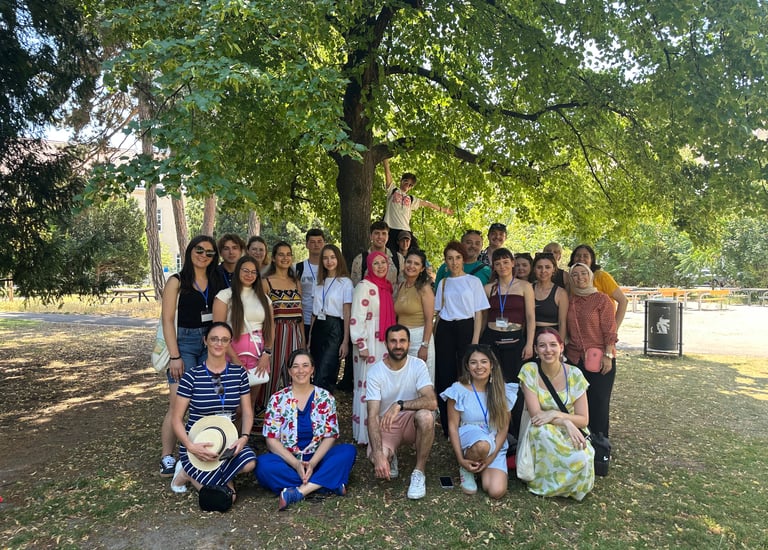

Feed and Feedback
Guidelines for Conscious and Inclusive Feedback in Multicultural Spaces
In any collaborative or learning environment, feedback is both an art and a responsibility. It is not just something we give: it’s something we build together as a living process, a mirror, a bridge. A huge opportunity for mutual transformation.
Too often, feedback is misunderstood as a form of critique, correction, or control. But true feedback should be a conscious, inclusive, and empathic exchange.
It’s not about pointing out flaws or one person “fixing” another, and certainly not about reinforcing hierarchy or assuming authority. Let’s take a quick look at why it is important to define what feedback is and what is not:
What are we bringing to the table?
Languages are more than vocabulary. They are full of rhythm, emotion, and identity. When we listen across languages, we’re not just hearing; we’re receiving. Every accent, pause, or phrasing is not a barrier, these are the ingredients that create a unique “melting pot”.
As facilitators, we must be attuned and willing to digest this diversity. An easy way to remember four keys to giving feedback in a conscious way, is doing it with C.A.R.E:
C- Curiosity: Approach every person, language, and moments with a desire to understand, not to judge. Ask before assuming and be open to being surprised.
A- Awareness: Be mindful of your own cultural lens, biases, tone, and body language. Pay attention to the context (verbal and nonverbal).
R- Respect: Honor every voice, every accent, every perspective.
E- Empathy: Listen actively, beyond words. Give feedback in a way that acknowledges emotions, intentions, and the courage it takes to share vulnerability.
Now, I invite you to ask yourself before starting any feedback session:
Am I entering this space with humbleness?
Is my feedback grounded in care or control?
Am I feeding the moment with curiosity, respect and empathy?
Am I aware of my energy in this moment?
Our energy is the soil in which feedback grows. If we bring urgency, ego, or judgment, that’s what we feed into the room. But if we bring empathy, patience, and openness to be changed ourselves, then our feedback becomes a form of nourishment.
So, the next time you offer feedback, pause and reflect:
Am I creating safety, or tension?
Am I building trust, or assuming authority?
Am I co-creating meaning, or trying to control the outcome?
Feedback is not about criticism, it is about co-creation.
One of the core values of iLanguage is to promote that every voice matters, every language has value, and every individual brings something essential and unique to the table.
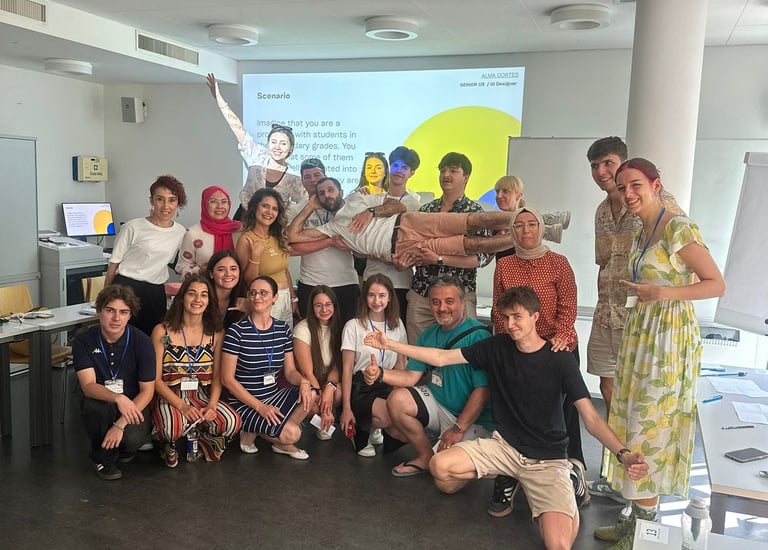

Innovation Through Design for LIVE
Imagine you're a secondary school teacher, and you notice that some students aren't fully integrated into the group—perhaps because they're not native speakers. How can you solve this problem in a creative, inclusive, and time-effective way?
One answer lies in a powerful methodology: Innovation Through Design. This approach allows us to tackle real-world challenges creatively, and one of its most dynamic tools is "Crazy Eights"—a fast-paced ideation method where participants generate eight different ideas in just eight minutes.
At first glance, solving a complex issue in such a short time might seem unrealistic. We often associate problem-solving with long hours of analysis, detailed planning, and linear thinking. But sometimes, overthinking leads to paralysis. What if we gave ourselves permission to be spontaneous, bold, and intuitive?
That’s what this workshop encouraged. With just a sheet of paper and a pen or pencil, participants were asked to respond to a challenge inspired by the Erasmus+ Project theme. They had only one minute per idea. At first, this time constraint felt uncomfortable—it pushed them out of their comfort zone. But that was the goal: bypass deep analysis and go straight into creative action.
Just like in urgent real-life situations, when we need to act quickly, we don’t always have time to overthink—we just react. This exercise taps into that same instinct. It reveals how capable we are of generating ideas when there's no pressure to be perfect. And later, once the ideas are on paper, we can reflect, analyze, refine, and even collaborate to make them stronger.
One of the most powerful moments of the workshop was seeing individual ideas come together in groups. Some of the simplest thoughts evolved into impactful, collaborative solutions. The students weren’t just passive learners—they became problem-solvers, leaders, and co-creators. By the end, they felt empowered, proud to have contributed, and inspired by their own potential. They had fun, they were challenged, and they discovered what it means to lead and follow at the same time—to be both captains and navigators.
I highly recommend this method not only for innovation and idea generation, but also for team building, inclusion, and creative problem-solving in the classroom or any group setting.
It was a pleasure to witness how much joy and learning happened at the same time. A truly memorable experience—one that stays in the heart.
Want to learn more about Innovation Design, Design Thinking, and the Crazy Eights technique?
Follow the links below.
https://xn--kreativittstechniken-jzb.info/methode/crazy-8/
https://projectdesigntoolkit.org/en_GB/tool/?id=1
Thank you
Karen Cortes
Consultant UX / UI Designer
CO- founder UXDesigners
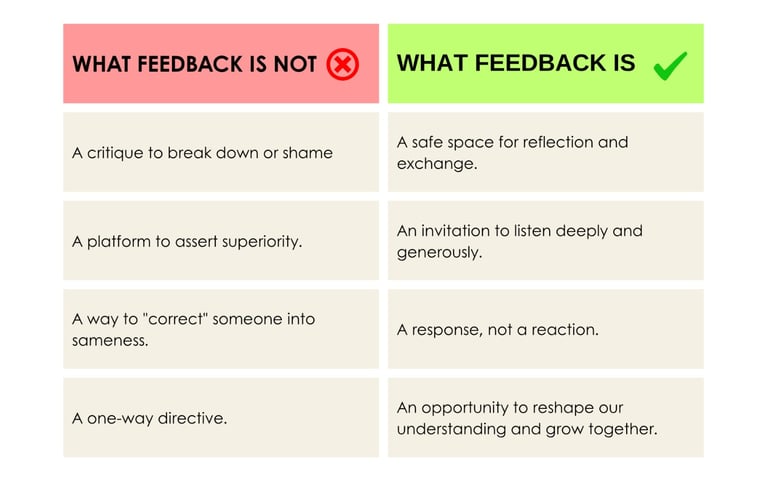

Let’s honor that together.
Find more ressources about this thema by clicking the arrow above.
Written by Natalia Quesada Vargas, MA.
Check out our blog to discover more resources
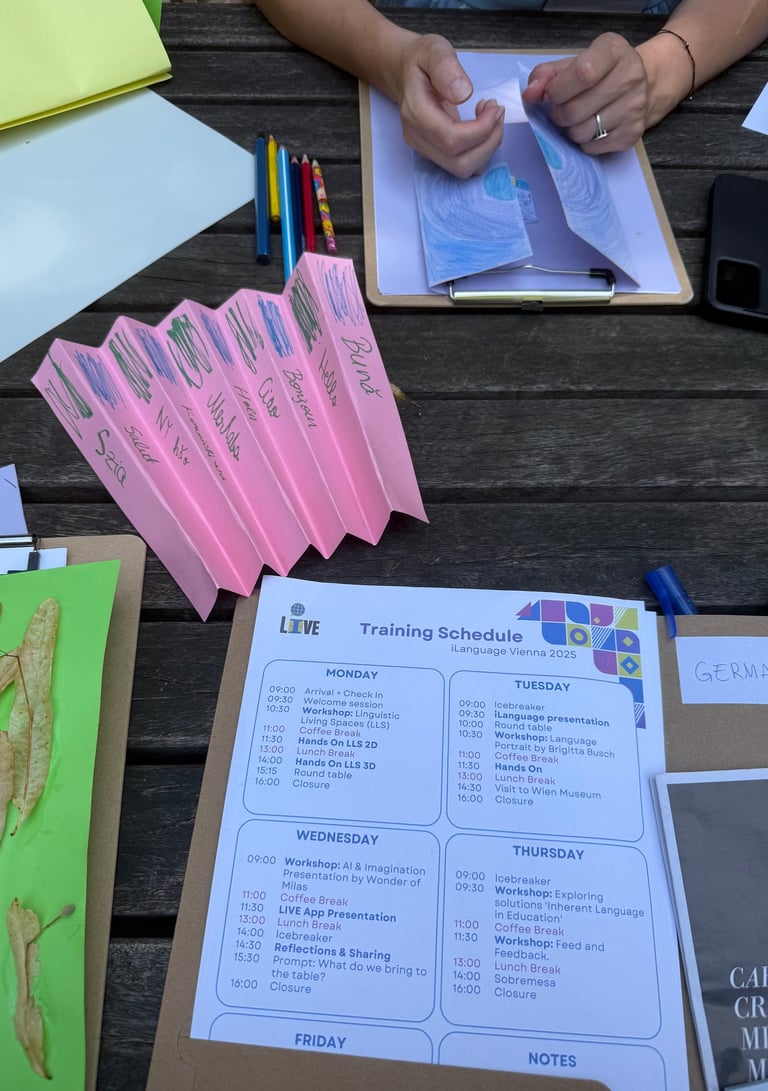

Gallery
Explore our resources celebrating multilingualism and linguistic diversity.
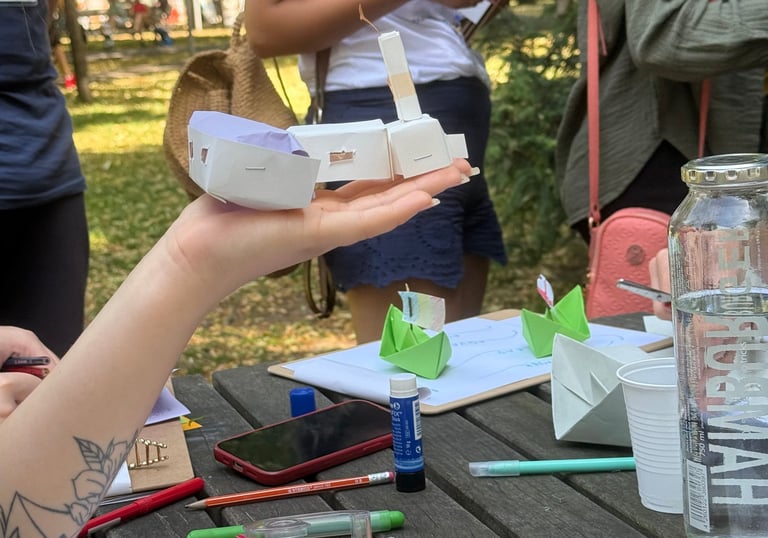

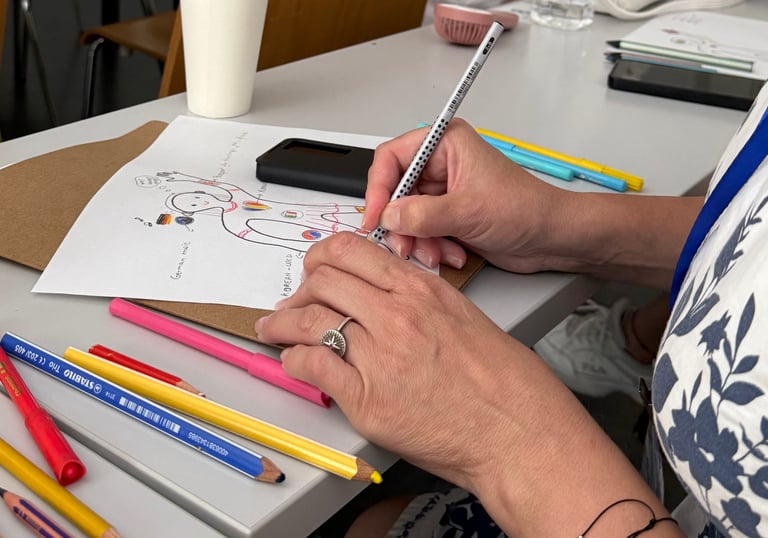

Diversity
Empowering multilingual communication in diverse contexts.
Inclusion
Education
© 2025. All rights reserved.
